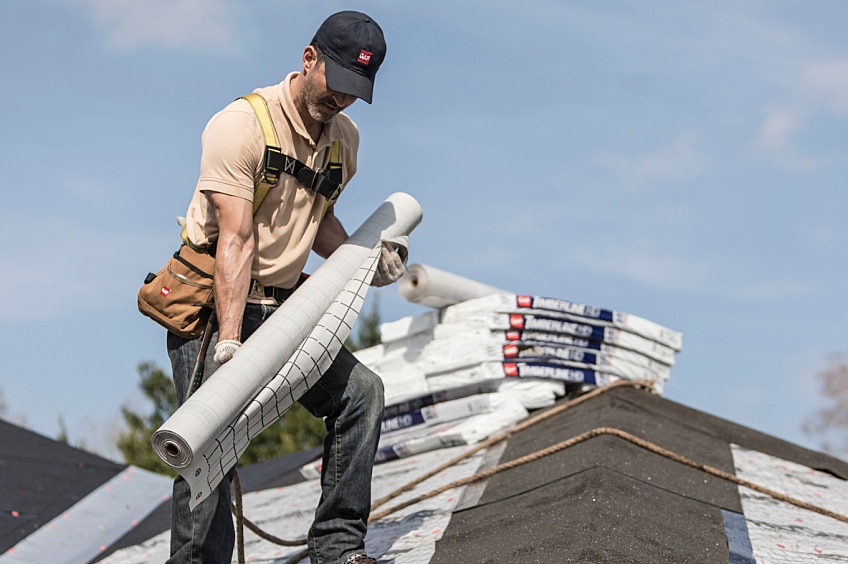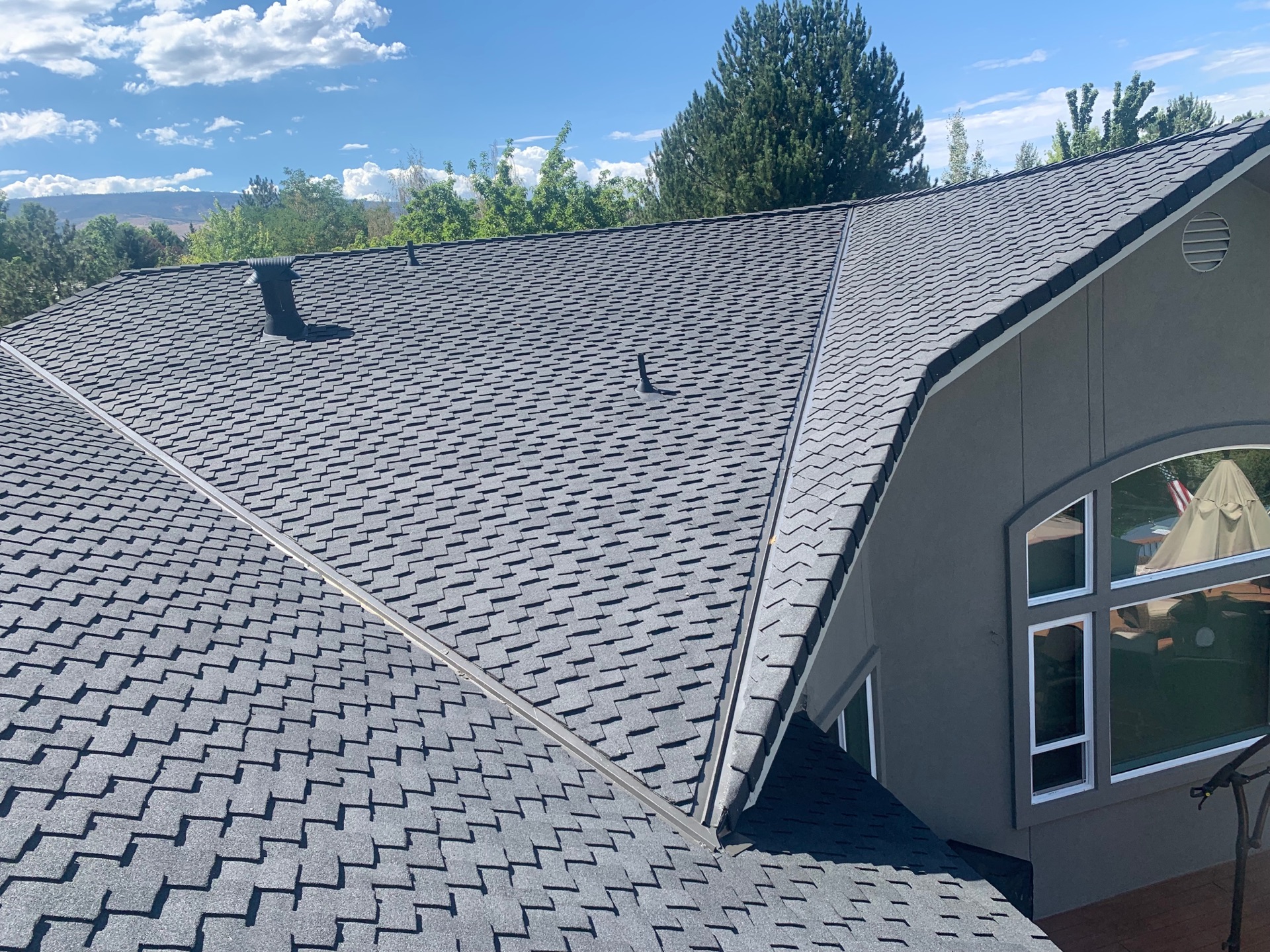Usual Concerns That Can Impact Your Roof Covering and How to Address Them
Roof covering problems can develop from different variables, affecting the integrity of a home. roofing pleasant hill mo. Typical troubles consist of leaks, missing tiles, and bad ventilation. Property owners commonly ignore these worries until they intensify, causing more significant damage. Comprehending the causes and options is important for preserving a roofing system's durability. What steps can be required to prevent these problems from coming to be expensive repair services?
Roof Leaks and Their Causes
Roof covering leakages can occur from different resources, recognizing their primary reasons is crucial for efficient prevention and repair. One common factor is the build-up of debris in rain gutters and valleys, which can block water flow and lead to merging. Additionally, incorrect blinking around skylights, smokeshafts, and vents can create weak points, allowing water to infiltrate. Aging roof materials likewise play a considerable duty; as roofing systems age, they may come to be brittle and shed their performance at warding off dampness. Additionally, ice dams can create during cold weather, causing water to support under shingles and leak into the home. Finally, poor air flow can lead to moisture buildup in the attic, which may compromise the roofing system structure with time. Identifying these causes can assist homeowners take positive actions to maintain their roof coverings and protect against costly repair work.
Missing or Harmed Tiles
Many property owners deal with concerns with missing out on or harmed shingles, which can considerably compromise the integrity of a roofing. Roofing shingles can come to be dislodged or wear away due to severe climate condition, age, or poor setup. This damage usually leads to leaks, enhanced energy expenses, and prospective architectural issues if not dealt with promptly.To treatment this issue, property owners ought to conduct regular evaluations of their roofs, especially after severe storms. Recognizing missing out on or harmed roof shingles early can stop additional problems. If tiles are found to be missing out on, replacing them promptly is important. For minor damages, such as splits or curling, applying roofing concrete can supply a momentary fix.In situations of extensive shingle damages, a total roofing replacement might be needed. Consulting with a professional roofer is advisable to examine the degree of the damage and suggest the very best course of activity to guarantee the roof covering's long life and efficiency.
Poor Roofing Ventilation
Poor roofing ventilation can bring about a selection of concerns, including too much heat accumulation and dampness accumulation. House owners may observe indicators such as warped roof shingles, peeling off paint, or mold growth as signs of poor airflow. pleasant hill roofer. Resolving these problems with reliable air flow solutions can considerably boost the roof's life expectancy and total home comfort
Signs of Poor Ventilation
Exactly how can one recognize the indicators of inadequate roof air flow? Homeowners may notice several signs that indicate bad ventilation in their roof. One usual indicator is the presence of excessive heat in the attic, usually leading to increased power expenses as a/c systems function tougher to cool down the home. In addition, dampness build-up might show up as mold and mildew or mold, which can endanger both the roofing and interior air high quality. Deforming or discoloration of roofing products can additionally signify poor air flow. Ice dam formation during winter season months may suggest trapped warmth due to inadequate air flow. Acknowledging these signs early can aid home owners address ventilation issues prior to they intensify into even more considerable roof issues.
Solutions for Improved Ventilation
To boost roofing system air flow, house owners can carry out several reliable services that advertise much better airflow and minimize heat build-up. One of one of the most effective approaches is to set up ridge vents, which permit warm air to run away from the top of the roof covering. Furthermore, soffit vents can be mounted along the eaves to draw cooler air right into the attic area. Including wind turbine vents or powered attic room ventilators can even more enhance circulation, particularly in warm climates. Homeowners ought to additionally ensure that insulation is effectively installed, as it can obstruct air movement if not positioned appropriately. Regular evaluations and upkeep, including clearing up debris from vents, are necessary to keeping reliable ventilation and extending roof covering life.
Storm Damage and Its Influence
Storms can trigger numerous types of damage to roofings, considerably impacting their integrity and durability. Determining indicators of roof issues quickly is necessary for reliable fixing and maintenance. Understanding these elements can assist house owners guard their buildings versus storm-related damages.
Kinds Of Tornado Damage
Severe weather events can cause various kinds of damage to roofs, greatly impacting the integrity of a home. High winds can lift roof shingles or ceramic tiles, resulting in exposed locations that might permit water infiltration. Hail storm can create dents, splits, or slits in roof covering products, compromising their protective capabilities. Hefty rainfall can worsen existing susceptabilities, causing leakages and water damage. Additionally, snow buildup can trigger structural tension, possibly bring about cave-ins otherwise correctly managed. Particles from tornados, such as fallen branches or rooted out trees, can trigger significant physical damages also. Recognizing these kinds of storm-related damage is essential for home owners to take timely action and assure the durability of their roofing systems.
Indicators of Roofing System Issues
Numerous home owners may not quickly see the indications of roof problems, numerous indicators can recommend tornado damage and its influence. Visible roof shingles that are fractured, missing out on, or curled commonly indicate that the roofing system has actually been compromised. House owners need to also be attentive for granules in seamless gutters or around the home, as this can signify shingle degeneration. In addition, discoloration or water stains on ceilings and wall surfaces may suggest leaks originating from storm-related damage. In many cases, the existence of mold and mildew or mold can indicate extended wetness direct exposure, more emphasizing the urgency of dealing with roof problems. Sagging or uneven rooflines can suggest structural problems that may have occurred after severe weather occasions, necessitating prompt inspection.

Fixing and Upkeep Tips
Dealing with roofing concerns immediately can significantly minimize additional damage and expand the life expectancy of a roof. Tornado damage, such as missing out on leakages or roof shingles, calls for prompt focus to stop water seepage and structural concession. Homeowners ought to perform routine examinations after severe weather condition events to recognize potential damages. If visible issues develop, such as sagging or discoloration, it is a good idea to speak with a professional roofer for an extensive evaluation. Temporary repairs, like tarps, can provide temporary relief up until irreversible fixings are made. Normal maintenance, consisting of cleansing rain gutters and trimming looming branches, can likewise minimize the risk of future storm damages. By prioritizing these fixing and upkeep suggestions, property owners can boost the resilience and efficiency of their roof.
Mold and Mildew Growth
It produces an atmosphere conducive to mold and mildew and mold development pleasant hill roofing contractor when moisture accumulates on roof covering products. This biological infestation can compromise the structural integrity of the roof and lead to considerable health and wellness issues for residents as a result of the launch of spores into the air. Typical reasons for dampness build-up include inadequate ventilation, leaks, and long term exposure to humidity.To battle mold and mold, house owners must routinely inspect their roofing systems for indications of water damages or staining. Executing proper air flow systems assists reduce moisture levels, while immediately dealing with leakages is vital. Cleaning the roofing system with proper mold-removal services can also be effective. In extreme situations, substitute of influenced roof materials may be necessary. Routine maintenance and alertness can prevent mold and mold from coming to be a relentless issue, ensuring both the durability of the roof and the health and wellness of those living beneath it.
Accumulation of Particles
Mold and mildew and mildew are not the only risks to roof products; the build-up of debris can additionally posture significant dangers. Leaves, branches, and other raw material can collect on the roofing, causing different problems. When particles blockages gutters and downspouts, it protects against appropriate water drainage, which can cause water merging and potential leaks. Additionally, trapped moisture can create a setting for mold and mold growth, additional wearing away roof materials.Regular upkeep is crucial to alleviate these dangers. Property owners ought to regularly inspect their roofing systems, specifically after storms or high winds, to remove any type of collected particles. Cleansing rain gutters and making sure that downspouts are clear will certainly assist preserve correct water drainage. Sometimes, hiring an expert service might be recommended to guarantee risk-free and detailed cleaning. By resolving debris buildup promptly, the life-span of the roofing can be prolonged, securing the home from more damages.
Aging Roof Materials
Aging roof covering products provide a significant difficulty for homeowners, as their damage can cause major architectural issues. pleasant hill roofing contractor. Over time, exposure to severe weather, UV rays, and temperature level variations speeds up wear and tear, decreasing the roof's efficiency. Asphalt roof shingles might fracture, curl, or shed granules, while metal roofing systems can create corrosion and corrosion. These issues not just endanger the roof covering's integrity however can also bring about leaks and water damages inside the home.To address aging roof covering materials, regular inspections are vital. Property owners ought to seek indications of wear, such as missing tiles or staining. Normal upkeep, including cleansing seamless gutters and changing damaged products, can expand the lifespan of the roof covering. In cases of extreme damage, a complete roof replacement may be essential. Consulting with a specialist professional roofer can provide an accurate analysis and appropriate solutions tailored to the specific needs of the home
Often Asked Concerns
How Can I Tell if My Roof Covering Demands Substitute?
To identify if a roof needs substitute, one need to evaluate for significant wear, missing roof shingles, leakages, or sagging. Consulting a roof specialist can offer an exact assessment and advice on required actions for safety and security and durability.
What Are the Signs of a Roof Covering Guarantee Concern?
Indicators of a roof covering service warranty issue include visible leakages, considerable wear, or damages not brought on by external variables. Home owners should record problems and consult the service warranty terms to establish qualification for substitutes or fixings.
How Often Should I Get My Roofing Checked?
Routine roof evaluations are advised a minimum of twice a year, ideally in spring and autumn. This positive strategy aids recognize possible problems early, guaranteeing the roof covering continues to be in excellent condition and prolonging its lifespan.
Can I Do My Own Roofing Fixes?
The private considered the possibility of doing their very own roof repair work. While some small jobs could be convenient, care is suggested; inappropriate fixings can cause significant concerns, warranting professional aid for safety and effectiveness.
What Is the Average Life Expectancy of Various Roof Covering Materials?
